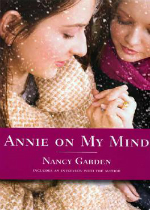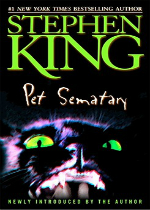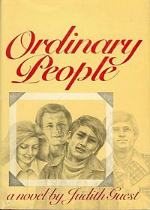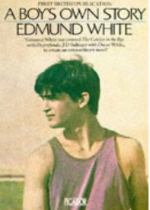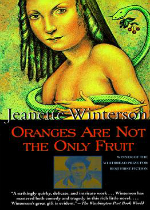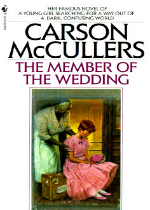Young Adult: Under the Influence of Books
Author: Maia McCormick
December 11, 2011
When I was an enterprising young writer back in the turbulent years of middle school, my stories (usually fantasy, and all abandoned after one or two chapters) always featured a gay character. She (and she was usually female) wouldn’t be the main character, but a sidekick or best friend. It was perfectly normal, I reasoned with myself, to include gay characters in my stories; because some people in real life were gay, and what was so weird about it if lesbians consistently turned up in things I was writing, and I’m sure gay authors write about straight people, so nothing about this makes me gay.
Of course, looking back on this period in my life, I laugh hysterically at my own foolishness, but the truth was that at the time, I didn’t really know any queer people, didn’t have any proper gay role models, was only just beginning to grapple with the notion that I might like women. Yet still (or maybe because of all this), I was strongly feeling the lack of any queer literature in my life. I was in eighth grade when it occurred to me that there must be actual, published books with queer female protagonists. At the time, it seemed like a totally novel (no pun intended) idea. And so I did some very surreptitious research, and sheepishly checked out Kissing Kate (Lauren Myracle) and Keeping You a Secret (Julie Anne Peters) from the public library.
I had stumbled upon queer YA, and it felt fantastic to know that I was not alone in the world, that other girls were going through the same confusion and struggle that I was. I had always identified very strongly as a bookworm, but it wasn’t until I discovered this magical subgenre that I felt represented in what I was reading.
We at Lambda Literary asked a bunch of our favorite queer and allied authors (and screenwriters, and performance artists, and sex educators, and artist) to answer the question: when you were younger, what was your favorite YA novel? (And why?) Below are their answers—books that aren’t necessarily queer in content (though many are), but that these authors loved in their youth. We hope that this feature gives our readers a lovely list of YA novels to recommend to any young people in their lives (or, let’s be honest, to go check out of the library themselves, moving quickly to avoid being seen in the “teen lit” shelves—I know I’ve done it). It goes without saying, too, that everyone who wrote in is worth checking out, and many have written fabulous queer YA novels of their own. Enjoy!
Bruce LaBruce, filmmaker and writer: My favorite classic YA novels are obvious choices: J.D. Salinger’s Catcher in the Rye and Sylvia Plath’s The Bell Jar. Strangely, the protagonists of both of these novels have mental breakdowns, but I always found it best to read about these kinds of stories in fiction in order to be prepared for the many non-fictional challenges that life will inevitably present! I would also recommend Jack Womack’s Random Acts of Senseless Violence (particularly in light of the recent London riots!) and Poppy Z. Brite’s Exquisite Corpse (much better than Twilight!). Finally, although it might be designed for a slightly more mature reader, I would highly recommend one of my favorite novels of all time, J.R. Salamanca’s Lilith. It’s also a story about mental illness in youth, but it’s beautifully written and full of fine insights about life and imagination.
Julie Anne Peters, young adult and children’s author, She Loves You, She Loves You Not…: My favorite queer novel has been, and will probably always be, Annie on my Mind by Nancy Garden. Annie was the first book I read after coming out, at a time when I needed the validation and self-affirmation of knowing I wasn’t alone in the world. Even though I was fortunate to have missed all the earlier lesbian books where the protagonists came to fatal or unhappy endings, Annie let me know there was hope for fitting in and finding love. Even today, when I need a pick-me-up, I’ll return to my old friend and smile as I read each page of Annie.
Emanuel Xavier, spoken word artist and author, Christ-Like: The Outsiders by S.E. Hinton had enough gay subtext for me to indulge in as a young adult and I probably picked it up after watching a rental of the 1983 film adaptation starring a smorgasbord of 80s teen idols. I most identified with Ponyboy, the main character, who liked to read and watch sunsets with the often misunderstood Johnny. A few years later, my own dysfunctional parents kicked me out at sixteen for being gay and I ended up on the streets running around with gangs myself. The book was banned from many schools and libraries for glamorizing violence but the Greasers and the Socs were tame by comparison to the crowd I was running around with.
John Weir, author, What I did Wrong: I’m not sure I read a Young Adult novel when I was a young adult, unless Carson McCullers counts – Member of the Wedding and Ballad of the Sad Cafe are about the closest things I can think of to YA novels that I read when I was 15. And a cheezy novel that I swiped from my mother called The Crazy Ladies– sort of a 1970s Sex and the City– which must have been written for 15-year-olds.
Simon Doonan, author and creative ambassador-at-large Barney’s: I am a big believer in high-brow and low-brow. For every Iris Murdoch, be sure to take in a good piece of pulp. In 1978 Judith Krantz’s Scruples came into my life and it has never left. Scruples is a seriously brilliant combo of trash and genius. My favorite passages revolve around the magnificently cunty character named Countess Liliane Du Vertdulac. She starves the pudgy heroine into a swan-like transformation with watery soups and teaches her the scheming, seductive, stylish ways of French women. This is a fabulous book for anyone connected with fashion and for everyone who wishes they were, which is basically everyone on the planet. Right?
Douglas A. Martin, author, Once You Go Back: I always wanted to read this Judy Blume book called Starring Sally J. Freedman As Herself. I’d read others, but the librarian at my elementary school wouldn’t let me check that one out, no matter how many times I asked about it or went looking.
I’d saved up quarter allowances for Pet Sematary in the third grade, because my mother thought I was too young and wouldn’t buy it for me when we saw it at the store.
I saved cans and used the recycling money at a place where people resold paperbacks for credit off other used [books], calling all through the summer asking if they had in any new V. C. Andrews books. Those gave me something to talk about with my stepfather’s mother.
I know I got some glee carrying around what I wasn’t supposed to be seen with…peaking with Jackie Collins’s Rock Star. I probably read The Vampire Lestat around age 13-14, impressing another (public) librarian, who told me it was a really good book when I found it in the stacks.
Brent Hartinger, young adult author, Geography Club : Alas, when I was an actual young adult, there were very, very few GLBT teen novels — or at least very few that I actually knew about. So I have to sort of “rewrite” novels in my head, turning the characters from straight to gay. I certainly did that with Ponyboy Curtis in The Outsiders, which is the book I read as a teenager that made me say, “Wow! You mean books don’t have to be boring?!” I also loved the novel Ordinary People (which became the movie) and the character of Conrad Jarrett, who was basically living my life. I “rewrote” him as gay too.
Tina Cesa Ward, writer and director, Anyone But Me: Long ago were the days when I was a young adult. But in my years of adulthood, I have found the “YA” novel to be just as engaging and often more courageous in storytelling than most fiction on the shelves today. Scott Westerfeld’s “Uglies” trilogy examines the struggle for individuality in a world where being individual means banishment from society. I don’t think there is a more relatable theme for teenagers, gay or straight, to connect to. As an adult, I know the struggle to succeed in the world but remain who we are in our hearts is one of the biggest challenges life throws at us. It’s a great piece of imaginative storytelling whose teenage hero, Tally, stole my heart in the first page as she searched for the answer to the internal question: “What’s wrong with just being me?”
Robyn Ochs, writer and activist: I am a huge fan and avid reader of YA LGBT literature. So many of the books are affirming and entertaining. Plus, I can read a book in a day and feel very, very productive! I’d like to give a special shout out to two of Brent Hartlinger’s books: The Geography Club (2003) and Split Screen (2007). I spent years fruitlessly searching for a good LGBT-themed YA book with a clear, unequivocally bi-identified character whose bisexual identity is presented as an unproblematic fact. I craved a book in which the bi character would not be required to have both a boyfriend and a girlfriend during the course of the story in order to be read as bi, and where bisexuality would be simply a fact about the character and not a source of dramatic conflict. I was surprised to find how difficult this was! Although there are numerous characters who could be read as bisexual, few fictional characters are in fact explicitly identified this way. The first I found was Hartlinger’s delightful character Min, who appears in both books. Hopefully, she’ll become one of many.
A few of my other favorites are Parrot Fish by Ellen Wittlinger; My Tiki Girl by Jennifer McMahanon; and Down to the Bone by Mayra Lazara Dole.
(Those interested in reading more can check out my [all too short] list of YA novels with bi characters and my short article, “Finding Bisexuality in Fiction.” I welcome your suggestions.)
Lucy Jane Bledsoe, author, Big Bang Symphony: The Pippi Longstocking books by Astrid Lindgren—actually, they’re chapter books, not YA—were a godsend for me as a little girl. Here was a character who was physically and mentally strong, entirely independent, loved animals, and deeply valued her friendships. She bragged about being the strongest human being in the world, and she out-smarted adults in all her adventures. Pippilotta Delicatessa Windowshade Mackrelmint Ephraim’s Daughter Longstocking (her full name) gave me an example of a girl who lived for adventure, story-telling, and the exploits of her imagination. She was absolutely the queerest character I ever ran across in kids’ literature, and I’d venture to say she still is today.
Alex Sanchez, author, Boyfriends with Girlfriends:When I was a teen in the early 70s, there were few YA novels, and certainly none about an everyday boy like me who had crushes on other boys, struggled with coming out, and wanted so much to love and be loved. It wasn’t until later that I discovered Edmund White’s A Boy’s Own Story. Its loving portrayal of a lusty, funny, adventurous boy who longs for a connection with another boy gave me the courage to write the novels I wish had been available when I was a teen—books that would’ve told me, “It’s okay to be who you are.” Thanks for the inspiration, Edmund!
Cris Beam, young adult author, I Am J : I don’t think my favorite young adult novel is ever shelved with that genre, though it is about a young adult, and I did read it when I was uncomfortably young and desperately wishing I were more adult. The book is Oranges Aren’t the Only Fruit by Jeanette Winterson, and I read it on the floor of A Different Light Bookstore in San Francisco when I was fourteen years old. I think that book quite possibly saved my life. I couldn’t buy it and bring it home for fear of getting caught with a “gay book,” so I secretly marked my progress through its pages with a bookmark and returned for the story day after day. The protagonist’s family suppression was more dire than my own, but her resilience gave me hope—and the humor and sheer genius of the writing showed me that literature was the ultimate liberation.
Susan Miller, television producer and playwright, L Word, Anyone But Me and Thirtysomething: The book that most inspired my younger self was one that was not written at all. It appeared between the lines of other books, took hold in my wanderings, ran riot in my head. It had yet to materialize but I knew it was there in my longing for it. I knew it word for word even though such a thing didn’t announce itself to me in the library or classroom. I could trace its origins to every sudden sweet or confusing encounter on my way. It would become the future history of my complications. Each day was sharp with the promise of something I needed but would need to invent, a structure so original I found myself rushing toward it, though it wouldn’t be rushed. The story it told was this:
A big love, a broken heart, a confusion, a friendship, a death, the family romance, illusion, betrayal, days, years, rifts, wonder—and the girl who was practicing for all of it. This unwritten novel of young adulthood emboldened me to conjure a narrative of my own and to embrace books like The Member of The Wedding, Catcher In The Rye, and The Diary of Anne Frank which defied category but in their focus on the human condition through the eyes of their young protagonists helped define me.
Peter Cameron, author, Someday This Pain Will Be Useful to You: I didn’t read many YA novels while I was a YA. I read mostly adult novels, perhaps because I knew all to well what it felt like to be a troubled adolescent and I preferred reading about the adult life I anticipated rather than the present life I was enduring. However, when I was about 13, my mother signed me up for a YA Book Club—it may have been affiliated with the Book of the Month Club; I’m not sure. My membership was short-lived, but I still have two of the books I received through the club, and I treasure both of them: It’s Like This, Cat by Emily Neville (which won the Newberry Award in 1964) and Leo and the Lioness by Constance C. Greene, which was published in 1970. Both books are narrated by (supposedly) heterosexual characters, but there was something true and appealing about those voices that engaged and moved me. I realize now that it’s the fine quality of the writing that makes these voices resonate, and they are two books that I still read with admiration and pleasure.


